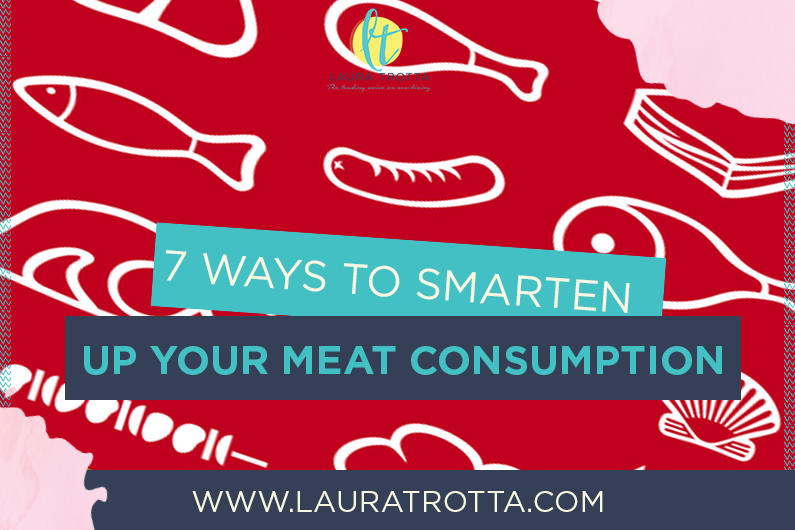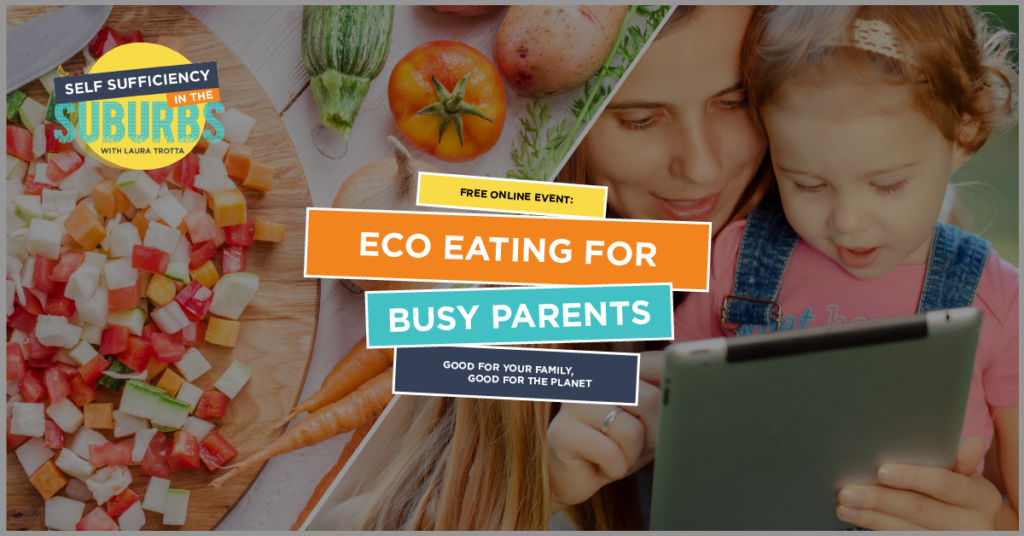There’s no denying that meat has been an important component of the human diet since the beginning of our existence, but modern meat production methods are having a significant impact on our environment.
In previous blog posts we heard from Joel Salatin of Polyface Farm on how regenerative farming techniques can restore the land and feed a growing population. However the sad fact is that regenerative farms are few and far between and the strong market for cheap, factory-farmed meat doesn’t seem to be going away anytime soon. The environmental impact of this scenario is devastating.
Some of the environmental issues around meat consumption include:
- Livestock production for human consumption is listed as the largest emitter of greenhouse gases on the planet.
- Intensive, factory-farmed meat production uses an unsustainable amount of grain crops, water, and land (most are grown in developing countries).
- 26% of terrestrial land surface is used for grazing (20-70% of this land is considered degraded), and
- One third of the world’s fisheries are over-fished and under threat…… In fact, it’s been reported that the world will run out of ocean fish by 2048 if current demand continues.1
Of course the cost of meat will continue to rise and place pressure on households who eat a diet high in animal products. This price increase may change behaviour and force households to reduce their meat consumption. However educating people about the impact of eating meat and showing simple ways meat consumption can be reduced, may be more effective in changing behaviour.
Podcast: Play in new window
In my experience as a sustainability educator, I’ve found that most people want to eat meat in some form or other and that giving it up in entirety is just too big a step for the average person to take, at least when starting out. This means the first challenge is in changing HOW we eat meat.
This is where the type of meat you buy, how often you eat it and how far you stretch it comes into play.
It’s time to seriously smarten up the way we buy and eat meat and these seven tips are the best place to start:
1. Cut your consumption
Meat-free Mondays have gained in popularity in recent years as a result of organisations promoting people to reduce their consumption of meat. If you eat meat, I encourage you to gradually introduce more meat-free days in the week until you hopefully reach a Meat Monday and meat-free rest of the week!
2. Choose organic, ethically-raised meat
Meat raised on a farm that uses organic, regenerative farming practices that restore the soil is in a total different ballpark to meat from a farm that does not employ regenerative farming practices, or factory-farmed meat fed grains and corn that are grown in a separate area to where the animal is housed.
Buying a smaller quantity of meat that has been sustainably produced is a win for your health and a win for the environment. Of course this meat will cost more (hello $20 organic chicken rather than a $3 factory-farmed chook), but it will also be more nutritious and flavoursome and best of all, your dollar will be going towards shaping the kind of world you want.
3. Make meat the bridesmaid, not the bride
Making the move from having meat as the centrepiece of a meal, to having vegetables as the showcase will pay off in regards to where the family budget, health and the environment are all concerned!
Stir fries, casseroles, soups, salads, and frittatas are all super nutritious and healthy and much kinder to the environment than eating a mixed grill or even meat and three veg every night.
4. Stretch your meat
When roasting meat, be sure to save the bones and make a tasty bone broth too, or do what I do and save bones from casseroles. Organic chicken drumsticks are an economical way to feed the family and are much more affordable than organic chicken thighs or breasts, plus you can turn the bones into a nutritious broth!
5. Learn the meat eco-hierarchy
Not all meat was created equal.
This is true in the organic vs. factory farmed meat comparison, but it’s also true when it comes to the type of meat you’re eating. Some meat varieties simply have a greater environmental impact than others.
Beef is the worst offender when it comes to environmental impact; cattle are one of the greatest emitters of greenhouse gases (from their belching as well as gases released from their manure) and it takes an estimated 50,000 litres of water to produce 1 kg of beef.2
Chickens are a more sustainable choice or, if in Australia, kangaroo meat is better again. Kangaroo meat is extremely high in iron, low in fat and can be used in place of beef in most dishes.
6. Offal isn’t a rude word
Once upon a time when a family killed an animal, they ate most of that animal, not just the breast or thigh meat. This included using the bones, tougher cuts of meat and even eating the offal (remember steak and kidney pie and chicken liver pate?). The end result was, not surprisingly, many, many nutritious meals and no waste!
If you’re lucky enough to be able to source your meat from a local, ethical and organic supplier, be adventurous and try your hand at turning some of the less trendy cuts and offal into meals for your family.
7. Save Seafood for Special Occasions
Although fish is recommended as a healthy diet option, in most of the world’s fisheries, fish are being removed from their habitats faster that they are able to reproduce, and though not all species are over-fished, the interconnected nature of the oceans eco-systems means that the depletion of one species can affect many other species. If you enjoy eating seafood, try and keep it to an occasional treat.
It’s crystal clear that we need to change our love affair with meat in order to reduce our impact on this precious planet. If you’re after further tips on how you can make more sustainable food choices, reserve your seat on my FREE LIVE online event on Tuesday 4th October. I’ll be sharing my best tips on eco-eating for busy parents (including recipes!).
Secure your seat here.
Footnotes
[1]Roach, J, 2006, ‘Seafood may be gone by 2048, study says’ National Geographic News, November 2 2006, http://news.nationalgeographic.com/news/2006/11/061102-seafood-threat.html viewed 22 August 2016.
[2] Cribb, J, 2010, The Coming Famine: The global food crisis and what we can do to avoid it, CSIRO Publishing 2010, p. 33
Podcast: Play in new window | Download
- Sustainable Home Design- factors to consider to maximise sustainability - July 28, 2022
- Advantage and Disadvantages of Tiny Houses - May 31, 2022
- How School Strike 4 Climate is Empowering Youth to Fight for Their Future - May 1, 2022



 Laura Trotta is one of Australia’s leading home sustainability experts. She has a Bachelor of Environmental Engineering, a Masters of Science (in Environmental Chemistry) and spent 11 years working as an environmental professional before creating her first online eco business, Sustainababy, in 2009. She has won numerous regional and national awards for her fresh and inspiring take on living an ‘ecoceptional’ life (including most recently winning the Brand South Australia Flinders University Education Award (2015) for the north-west region in SA and silver in the Eco-friendly category of the 2015 Ausmumpreneur Awards). With a regular segment on ABC Radio and with her work featured in publications like Nurture Parenting and My Child Magazine, Laura is an eco thought leader who’s not afraid to challenge the status quo. A passionate believer in addressing the small things to achieve big change, and protecting the planet in practical ways, Laura lives with her husband and two sons in outback South Australia.
Laura Trotta is one of Australia’s leading home sustainability experts. She has a Bachelor of Environmental Engineering, a Masters of Science (in Environmental Chemistry) and spent 11 years working as an environmental professional before creating her first online eco business, Sustainababy, in 2009. She has won numerous regional and national awards for her fresh and inspiring take on living an ‘ecoceptional’ life (including most recently winning the Brand South Australia Flinders University Education Award (2015) for the north-west region in SA and silver in the Eco-friendly category of the 2015 Ausmumpreneur Awards). With a regular segment on ABC Radio and with her work featured in publications like Nurture Parenting and My Child Magazine, Laura is an eco thought leader who’s not afraid to challenge the status quo. A passionate believer in addressing the small things to achieve big change, and protecting the planet in practical ways, Laura lives with her husband and two sons in outback South Australia. 


